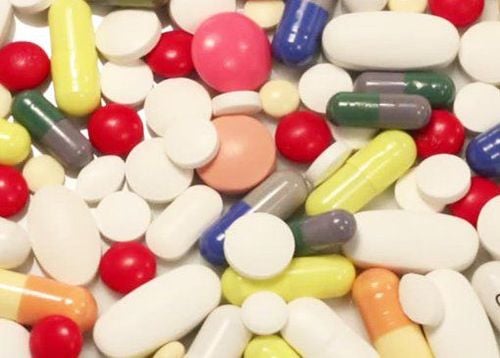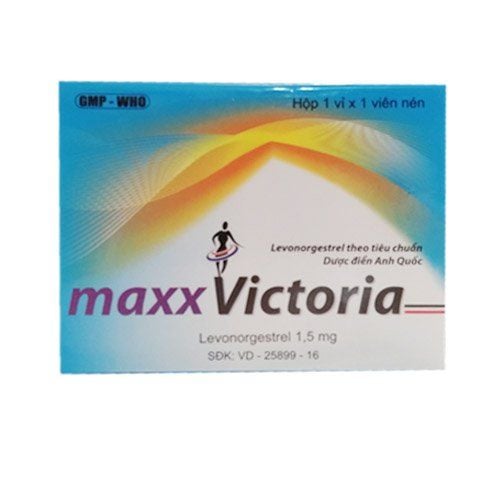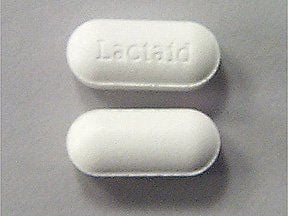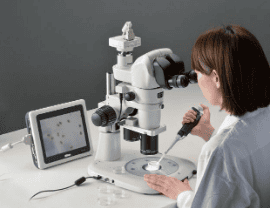This is an automatically translated article.
Post by Master, Doctor Mai Vien Phuong - Gastrointestinal Endoscopy - Department of Medical Examination & Internal Medicine - Vinmec Central Park International General Hospital.Crohn's disease and lactose intolerance both affect the digestive tract and have similar symptoms. It is important to pinpoint the exact condition you have, as Crohn's disease is very serious and can become dangerous if left untreated.
1. What is Crohn's disease and lactose intolerance?
Crohn's disease is characterized by inflammation of the intestines. If left untreated, it can cause serious illness. However, the symptoms of the disease are sometimes confused with the symptoms of lactose intolerance.
Lactose intolerance means that a person cannot produce enough or any lactase enzyme. This enzyme is mainly found in the small intestine and digests the sugar lactose (found in dairy products). Lactose intolerance will cause uncomfortable symptoms for the digestive system such as diarrhea, bloating....
Because Crohn's disease and lactose intolerance have similar symptoms, many people often confuse and misdiagnosis.
2. Distinguishing Crohn's disease from lactose intolerance by symptoms 2.1. Symptoms of Crohn's Disease Crohn's disease often causes inflammation in many different areas of the digestive tract. Its symptoms can range from mild to severe. Currently, there is no cure for this condition. However, its symptoms can often be effectively controlled.
Symptoms of Crohn's disease may include:
Abdominal pain Severe diarrhea Bloody stools Weight loss Loss of appetite Malnutrition Malnutrition Ulcers in the mouth Fatigue Rectal pain If Crohn's is not treated, symptoms Other possible symptoms include:
Arthritis Inflammation of the eyes and skin Inflammation of the liver and bile ducts Growth retardation or delayed puberty in children 2.2. Symptoms of Lactose Intolerance When a person with lactose intolerance eats lactose, the enzyme lactase breaks it down into a pair of simpler sugars. Both of these sugars, glucose and galactose, are rapidly absorbed through the small intestine and released into the bloodstream.
However, when there is not enough lactase, the small intestine partially digests the lactose. As the undigested lactose passes through the small intestine and into the colon, it absorbs water through osmosis. This excess water is what causes cramps and diarrhea sometimes associated with lactose intolerance.
Other symptoms of lactose intolerance include:
Bloating Nausea Abdominal pain Excessive bloating These symptoms occur during fermentation, which occurs when bacteria in the colon work to break it down lactose sugar. When the bacteria act on the lactose, it turns into acid, which then produces gas.
3. Diagnosis of Crohn's disease and lactose intolerance 3.1. Diagnosing Crohn's Disease There is no single test to diagnose Crohn's disease. Your doctor may perform a variety of tests to rule out other potential causes of your symptoms.
Some of the tests used to identify the disease include:
Blood tests: Blood tests may be used to rule out underlying infections or anemia. Stool blood test: This test is used to check for hidden blood in the stool. Computed tomography: CT scan technique will allow the doctor to see the small intestine. MRI scan: An MRI will allow the doctor to look for gastrointestinal fistulas, ulcers, or narrowing of the digestive tract in the small intestine or colon. Esophagogastroduodenoscopy: This procedure allows your doctor to view the food pipe, stomach, and small intestine with the help of a small camera on the end of the endoscope. It can be done with or without a biopsy. Colonoscopy: An endoscopy may be done to look for inflammatory cells called granulomas. It can happen with or without a biopsy. Balloon-assisted small bowel endoscopy: A small bowel endoscopy allows your doctor to look deeply into the small intestine. This test is often used to confirm the diagnosis.
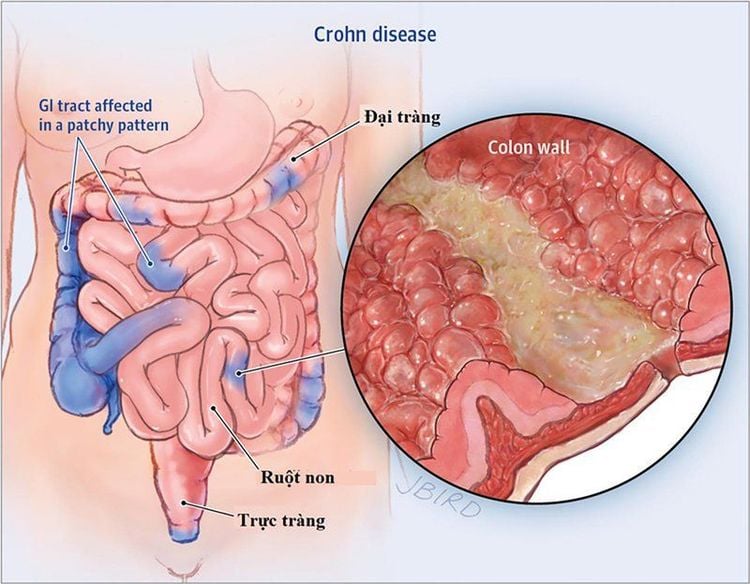
3.2. Diagnosing lactose intolerance The easiest way to diagnose lactose intolerance is to avoid dairy products like milk, cheese, and ice cream to see if the symptoms go away. If, after a week, you drink a glass of milk and the cramps and diarrhea return, chances are you are lactose intolerant.
To be more precise, you can diagnose lactose intolerance by testing your breath for lactose. When lactose metabolizes in the large intestine as opposed to the small intestine, the bacteria release hydrogen into the bloodstream. This hydrogen can then be measured in the breath. People who are lactose intolerant will have higher levels of hydrogen in their breath.
4. Treatment of Crohn's disease and lactose intolerance 4.1. Treatments for Crohn's Disease Treatments for Crohn's disease are primarily about reducing inflammation and eliminating complications that may arise over time. While there is currently no cure for the condition, long-term remission is possible. The effectiveness of treatments can vary from person to person. Treatment includes:
Anti-inflammatory drugs Drugs that suppress the immune system Antibiotics Anti-diarrhea Nutritional therapy or parenteral nutrition Surgery Lifestyle changes can also positively affect quality of life and effectiveness of medical treatments. The most important thing you can do is stop smoking or using any other form of nicotine. Identifying your food triggers, such as dairy or fiber, will also help.
4.2. Treatments for lactose intolerance Currently, there are only two ways to treat lactose intolerance, which are:
Avoid dairy products altogether Consume extra lactase enzyme as a dietary supplement without over-the-counter (OTC) such as Lactaid. In addition, people who forgo dairy may need to supplement their diet with vitamin D and calcium tablets. You can also supplement your diet with sources of vitamin D and calcium.
Most vitamin D is obtained through sun exposure. Foods that naturally contain this nutrient include egg yolks and liver.
In a nutshell, Crohn's disease and lactose intolerance both affect the gastrointestinal tract and have similar symptoms. It is important to pinpoint the exact condition you have, as Crohn's disease is very serious and can become dangerous if left untreated. Your doctor will be able to help you determine which condition is causing your symptoms. They can also help you decide on the most appropriate treatment.
Please dial HOTLINE for more information or register for an appointment HERE. Download MyVinmec app to make appointments faster and to manage your bookings easily.
References:Eadala P, et al. (2011). Association of lactose sensitivity with inflammatory bowel disease--demonstrated by analysis of genetic polymorphism, breath gases and symptoms. DOI: 10.1111/j.1365-2036.2011.04799.x Kenny EE, et al. (2012). A genome-wide scan of Ashkenazi Jewish Crohn's disease suggests novel susceptibility loci. DOI: 10.1371/journal.pgen.1002559 Lactose intolerance. (2018). niddk.nih.gov/health-information/digestive-diseases/lactose-intolerance/all-content Mayo Clinic Staff. (2018). Crohn's disease. mayoclinic.org/diseases-conditions/crohns-disease/symptoms-causes/syc-20353304 Nolan-Clark D. (2011). Effects of Dairy Products on Crohn's Disease Symptoms Are Influenced by Fat Content and Disease Location but not Lactose Content or Disease Activity Status in a New Zealand Population. DOI: 10.1016/j.jada.2011.05.004 Saibil FG. (2011). Crohn's disease and ulcerative colitis: Everything you need to know: The complete practical guide (3rd ed.). Richmond Hill, Ont.: Firefly Books.







